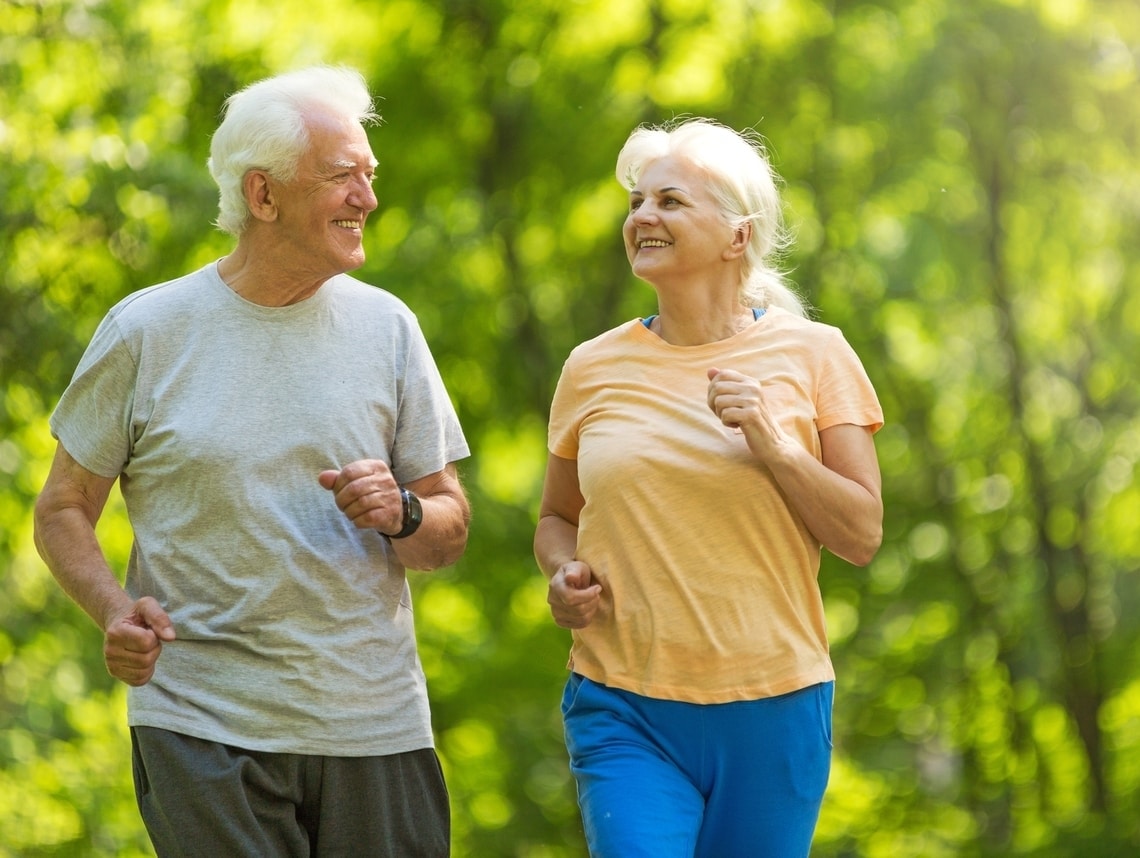
If your elderly loved one has osteoporosis, their doctor may recommend having them do weight-bearing exercises in order to strengthen their bones and muscles. But what exactly is a weight-bearing exercise? What are the benefits? What weight-bearing exercises can be done at home? Are there any exercises that should be avoided?
As always, it’s important to make sure your loved one’s doctor clears them for exercise before they begin a new exercise plan. Also here’s some important information you should know about weight-bearing exercises.
What are weight-bearing exercises?
Weight-bearing exercises force the body to work against gravity. This makes weight-bearing exercises the best exercise for the bones.
For your loved one, this includes activities they can do while standing that allow them to hold their own weight and work against gravity to move and exert themselves. Your loved one’s own weight becomes the tool they use to become stronger.
5 Benefits of Weight-Bearing Exercises
Weight-bearing exercises tout significant benefits for your loved one, including:
1. Strengthening Bones and Muscles
This type of exercise is excellent for strengthening both the bones and the muscles. By putting stress on the bones and muscles, they become stronger and denser. Increased muscle mass allows the muscles to better protect the bones, reducing the risk of osteoporosis or bettering the condition.
2. Increasing Overall Body Mechanics
With a good weight-bearing exercise routine, your loved one can improve their balance, coordination, and flexibility.
3. Boosting Metabolism and Can Aid in Weight Loss
If your loved one could benefit from losing weight, weight-bearing exercises can help. Building muscle requires more energy from the body. This makes the body burn more calories, helping them lose fat.
4. Preventing Other Health Issues
Engaging in regular weight-bearing exercises can be excellent for combating osteoporosis, but it’s also a good choice if your loved one has other health issues. A loved one who is overweight or who has arthritis, for example, can benefit greatly from weight-bearing exercise.
Related blogs: Exercise Options for Seniors with Arthritis
5. Lowering Cholesterol or Blood Pressure
Your loved one might also want to try weight-bearing exercises if they are trying to lower cholesterol or blood pressure.
Examples of Weight-Bearing Exercises for Seniors
You might be wondering what kinds of exercises qualify as weight-bearing. Weight-bearing exercises include anything that involves your loved one using their own body weight to work out.
Some examples of weight-bearing exercises include:
- Aerobics
- Basketball
- Dancing
- Hiking
- Jogging
- Stair climbing
- Tennis
- Walking
Look at the activities your loved one already enjoys and see if there is a way to add more standing or walking to the activity, to help increase your loved one’s weight-bearing activities.
Examples of Non-Weight-Bearing Exercises for Seniors
Non-weight-bearing exercises are still beneficial for your loved one, especially if recommended by their doctor, but they may not be what your loved one needs in order to strengthen muscles and joints. In this case, you may want to add more weight-bearing exercises to their existing exercise plan.
Some examples of non-weight-bearing exercises include:
- Bicycling
- Cycling
- Elliptical
- Horseback Riding
- Rowing
- Swimming
Weight Bearing Exercises to Do at Home
The great thing about weight-bearing exercises is that many can be done at home without the need for fancy gym equipment. We recommend talking to your loved one about activities they already enjoy doing to see if those can be incorporated into an exercise routine. Here are some ideas to get you started.
Brisk Walking
Walking is one of the simplest and most effective ways for your loved one to revamp their bone health. In fact, studies have shown that individuals who walked four hours each week had a 41 percent lower risk of hip fractures, compared to those who walked less than one hour per week.
Brisk walking is best if you’re loved one can manage it, but a walking routine can be adapted to any fitness level. Best of all, walking is free and can be done anywhere – indoors or out.
Tai Chi and Yoga
Tai chi is a form of slow movement that helps build coordination and strong bones. Studies have shown that 45 minutes of tai chi a day, five days a week can slow bone loss in postmenopausal women.
A daily yoga routine can provide similar benefits while strengthening the hips, spine, and wrists – bones that are highly susceptible to fractures.
Your loved one doesn’t need to sign up for expensive classes either. If you have a tablet or laptop, there are lots of free guided tai chi and yoga videos available on YouTube and other sites.
Aerobics
Aerobics is a vague term but includes lots of exercises that are not only great for building strong bones but also fun. Dancing (think: salsa, samba, rhumba, and swing), for example, will get your loved one’s heart pumping while fighting osteoporosis. Your loved one doesn’t need a studio membership either, as dancing can be done virtually anywhere.
Contact Care Options for Kids for Home Care Services
It’s never easy to see your loved one age, which is why we’re dedicated to helping make things easier. Once you have a routine worked out for your loved one to engage in regular weight-bearing exercise, our home care providers and other family members can help you keep everything on track.
If you or an aging loved one are considering home health care services, contact the caring staff at Care Options for Kids. Call today at (888) 592-5855.
